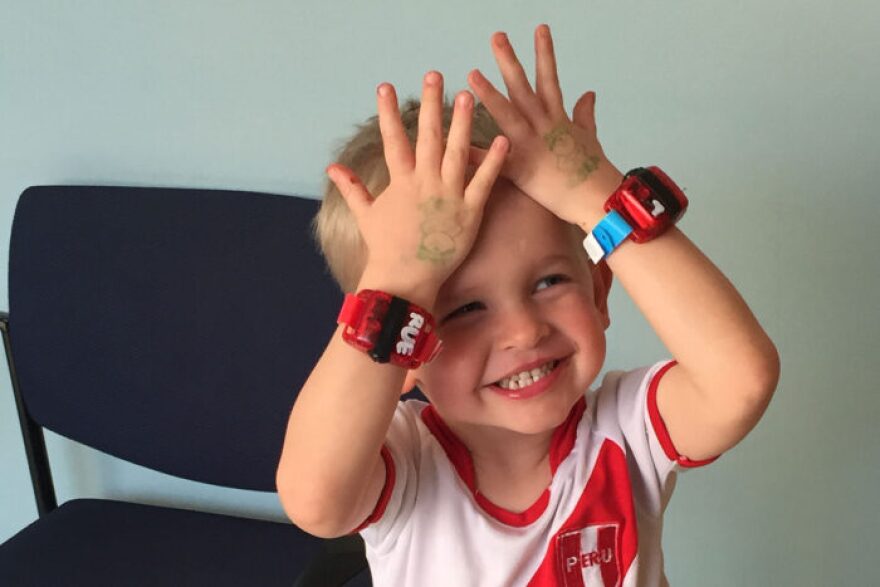Washington University researchers are testing a wearable biosensor that can detect potential motor impairments early, while kids are still young enough to respond to physical therapy.
An estimated 1 in 3,000 babies have a stroke around the time they’re born, but the signs can be so subtle that parents and doctors miss them.
In some cases, damage from a stroke may not cause symptoms until years later, said Wash U pediatric neurologist and study co-author Nico Dosenbach.
When he was in training at Children’s Hospital, Dosenbach examined a teenager who was having trouble putting on his baseball glove.
“One side of his body was a little weaker, and he wasn’t very coordinated with his right hand,” Dosenbach said. “My guess is if he hadn’t been playing competitive baseball, nobody would have noticed.”
An MRI revealed he’d had a massive stroke as a baby that had damaged the motor region of his brain.
Physical therapy helped a little, said Dosenbach, but it likely would have been more successful if doctors had caught the injury when he was a child.
‘I honestly trust these machines more than my judgment’
Children are notoriously difficult to assess at the doctor’s office.
A shy kid may hide under a chair, while another might try to ace an exam, leading to “artificially enhanced” test results.
The biosensors, which look like a chunky 1980s-era wristwatch, sidestep this issue by allowing doctors to measure a child’s behavior at home — similar to the way scientists study wild animals.
“You can’t ask an animal questions,” Dosenbach said. “But you can put a GPS on them, and you can find out where they’re going and when.”
Dosenbach, along with a team of Wash U researchers, recruited 185 children in St. Louis to test the biosensors, ranging in age from newborns to teenagers.
The sensors snap onto a child’s wrists semi-permanently, similar to a hospital bracelet, and allow doctors to measure how often and how quickly they move their arms.
The sensors collected a mountain of data — about 30 individual data points every second, for a combined total of 14,000 hours.
Some of the children wearing the sensors had diagnosed motor development disabilities, like cerebral palsy, while others had typical development.
In the data, “the separation between the two groups is very striking,” Dosenbach said. “If we had used these data to diagnose them in the first place, it would be incredibly easy.”
The key difference: how much the children moved each of their arms.
The researchers found typically developing children over age 3 used their non-dominant hand about 95% as much as their dominant hand.
But kids with motor impairments showed a much more lopsided ratio, moving one of their arms 60% to 80% as much as the other.
“It takes many years to train somebody who would pick this up in an office visit,” Dosenbach said. “I honestly trust these machines more than my judgment from examining and interacting with a child for a short period of time because it’s more information, over longer time periods, analyzed more accurately.”
In the long term, Dosenbach says this technology could become part of a routine screening process to help diagnose developmental disabilities in children at a young age.
“Technically, it’s totally feasible,” he said. “But future use depends on whether health care systems see the value in it.”
Follow Shahla on Twitter: @shahlafarzan
Send questions and comments about this story to feedback@stlpublicradio.org


